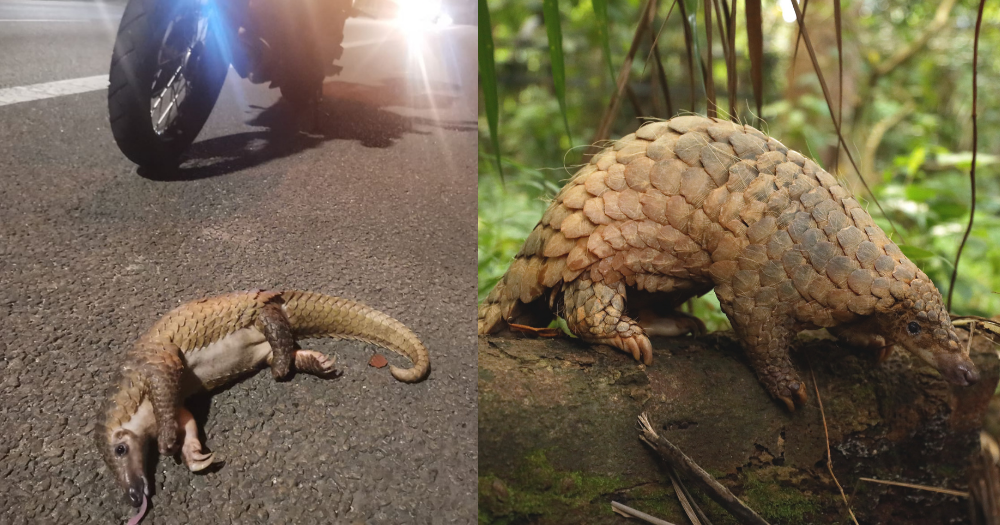Follow us on Telegram for the latest updates: https://t.me/mothershipsg
Critically-endangered Sunda pangolins are native to Singapore and the region.
Globally, they are mainly threatened by illegal wildlife trade. However, roads rather than poachers are the biggest enemy of pangolins in Singapore.
There may be a record number of pangolin roadkills in Singapore this year due to a few possible reasons. However, experts are still optimistic about the future of pangolins in Singapore if we keep up with our conservation efforts.
The author is a journalist for Singapore-based sustainability publication Eco-Business during the week. He is a rescue volunteer for ACRES on weekends.
By Robin Hicks
It’s been a difficult sort of year for pangolins.
A particularly large number of them have been killed on Singapore’s roads.
It may even be a record.
Since January, 10 of these cute scaly mammals have been run over.
That number compares to an average of three to nine pangolin roadkills a year over the last five years — and it’s only July.
In other words, if the rate of death continues, we will experience double the increase in roadkills at the end of the year.
10 might not really sound like many, considering that 85 people were killed in road accidents last year. But pangolins are on the brink of oblivion.
These remarkable animals, which have no teeth, a tongue as long as their entire body and a forest-preserving appetite for ants and termites, have the unfortunate claim to fame of being the world’s most trafficked animal. At their current rate of decline, they’ll be extinct within a decade.
About 1 million pangolins have been snatched from the wild over the last 10 years. One pangolin is poached every five minutes, for its meat or scales, which are used in traditional medicine as it’s believed to help women lactate (spoiler: it doesn’t work — the scales are made of the same stuff as your fingernails).
Locally, though, roads rather than poachers are the biggest enemy of the Sunda pangolin, the species native to Southeast Asia.
Roads the biggest enemy of Sunda pangolins in Singapore?
A shy beast, pangolins curl up into a ball when threatened. A few years ago, a pangolin caused a traffic jam at a junction near Bishan Park after wandering around in a four-lane highway and curling up on the wheel arch of a car.
Their scaly armour may deter a predator in the wild, but it doesn’t offer much protection against speeding vehicles.
The latest pangolin to be killed on Singapore’s roads was found on June 12, on the Seletar Expressway in the Mandai area.
*Warning: Graphic image ahead*
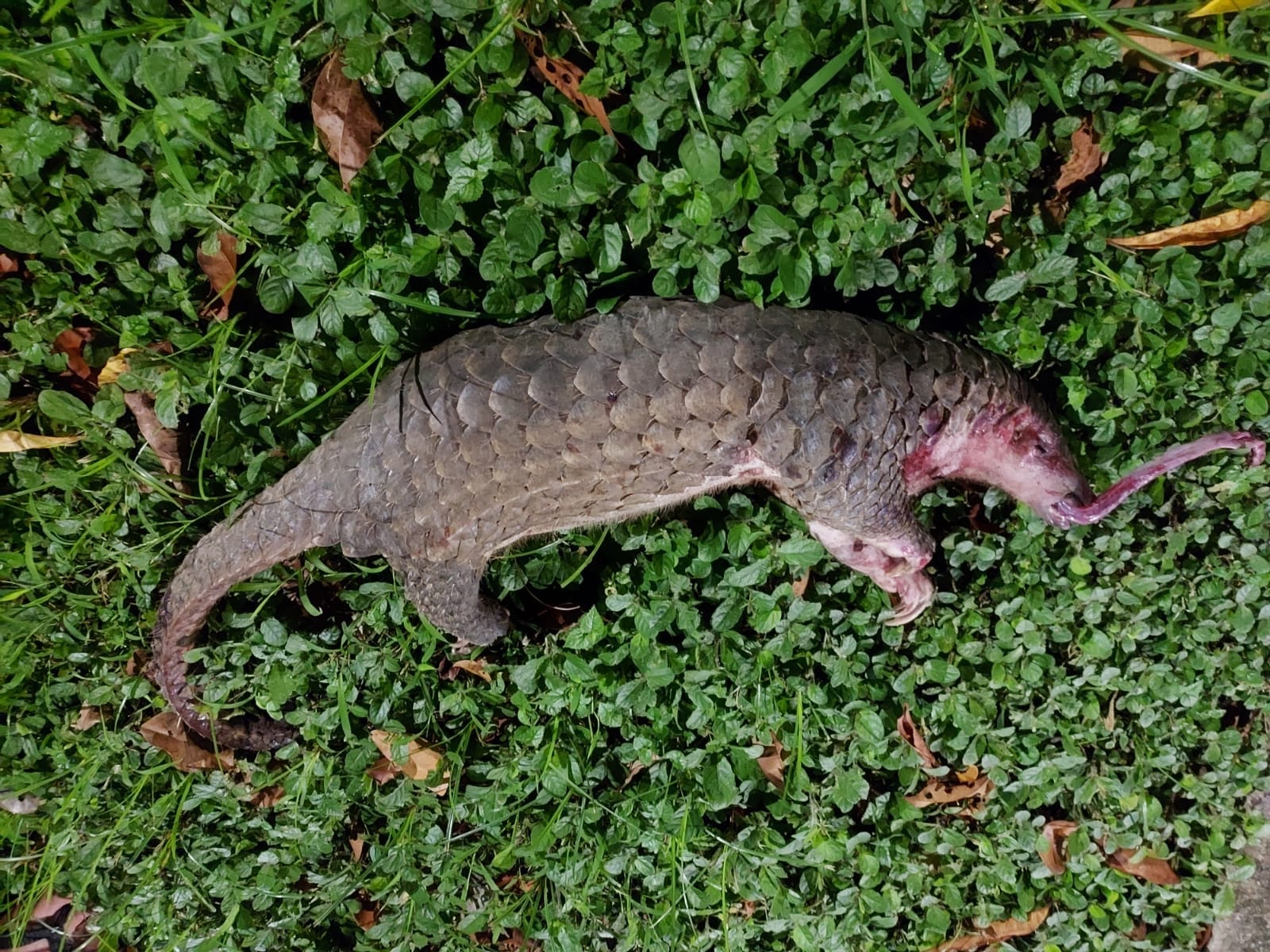 Photo courtesy of ACRES.
Photo courtesy of ACRES.
The 10th road death makes 2021 the deadliest year since 2015, when there were a total of nine reported pangolin roadkills, according to the Singapore Pangolin Working Group. Another bad year was 2016, when there were seven reported cases.
Most roadkills have been found on the fringes of forested areas, near nature parks and nature reserves, where pangolins most commonly roam.
Pangolins are solitary animals that move around looking for mates and food. Youngsters leave their mothers to establish their own territories and food ranges, and may cross roads to get to other patches of forest.
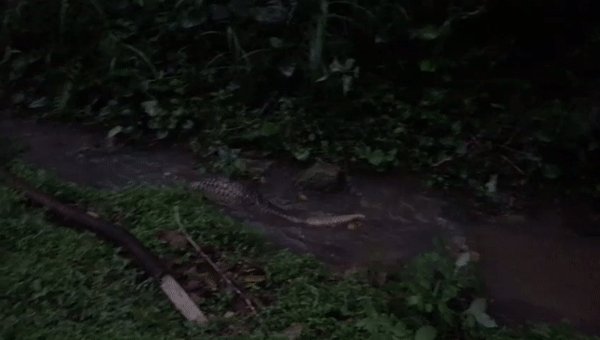
But why has 2021 been such a deadly year for Singapore’s pangolins?
It’s hard to say.
Possible reasons that led to a spike in reported pangolin deaths
Experts at the Singapore Pangolin Working Group (SPWG), a group of concerned organisations set up in 2014 that includes Wildlife Reserves Singapore (WRS), National Parks Board (NParks) and Animal Concerns Research & Education Society (ACRES), have a few possible explanations.
One is the weather. Though there is no evidence to prove this, heavy rain could have disturbed pangolins sleeping in their burrows in the ground, or could have affected the whereabouts of their prey, prompting them to move about more than usual.
Another is habitat disruption. Singapore is not losing its forests as fast as its neighbours, but the slow creep of urbanisation continues to shrink the patches of forest pangolins depend on for food and shelter.
There has also been a huge increase in visitors to Singapore’s nature parks and reserves over the Covid period. Could the surge in human traffic in our green spaces be disturbing these shy creatures?
It could simply be that there are more people out exploring natural areas, chancing upon pangolin roadkills, and reporting them, says SPWG.
Since the launch of a national campaign to conserve Singapore’s pangolins in 2018, public awareness of the plight of pangolins has grown, so more people are likely to report them if they see them, says Frances Loke Wei, programme manager for Conservation International Singapore, which is a member of SPWG.
The seizure of a record haul of pangolin scales at Singapore’s port in 2019 may also have helped to raise local interest in pangolin conservation too, says Loke.
SPWG wants the public to record any pangolin sightings — alive or dead — on its website, to get a better understanding of how these secretive creatures are faring in the wild.
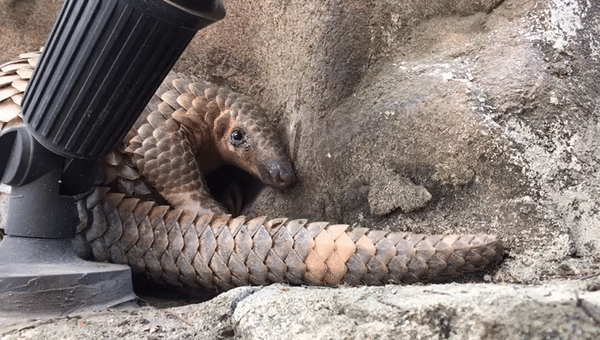 Video by Robin Hicks.
Video by Robin Hicks.
Population believed to be stable but more research needed
In 2016, NParks estimated that there are about 100 wild pangolins in Singapore, based on the number rescued and released over the years. But exactly how numerous these elusive animals are is hard to pin down.
Pangolins are hard to track, because when they rest during the day, they tend to burrow underground and lose their tracking devices.
More studies are needed to work out the size of the pangolin population in Singapore, says SPWG.
There are a few signs, however, that the pangolin population is “stable and reasonably healthy”, reckons Sonja Luz, vice president of conservation, research and veterinary services at WRS, and co-chair of SPWG.
An average of 22 pangolins are rescued by ACRES or NParks in a year, either because they are injured, found in alien urban spaces (ACRES once took a call for a pangolin found curled up in someone’s garden in Katong, a long way from any green areas), or at risk of injury and taken to WRS’s animal hospital to be examined, treated and rehabilitated.
Most of the rescued pangolins are healthy and include juveniles, pregnant females and females with young, which shows that they are reproducing in the wild, says Luz.
Injured pangolins brought to WRS have usually been hit by a car or attacked by dogs. Some have been brought in with cuts on the underside of their chest, which are most likely caused from climbing fences.
“The biggest challenge for pangolins in Singapore is navigating the urban environment where they are faced with threats like road traffic, habitat fragmentation and wild dogs,” says Luz.
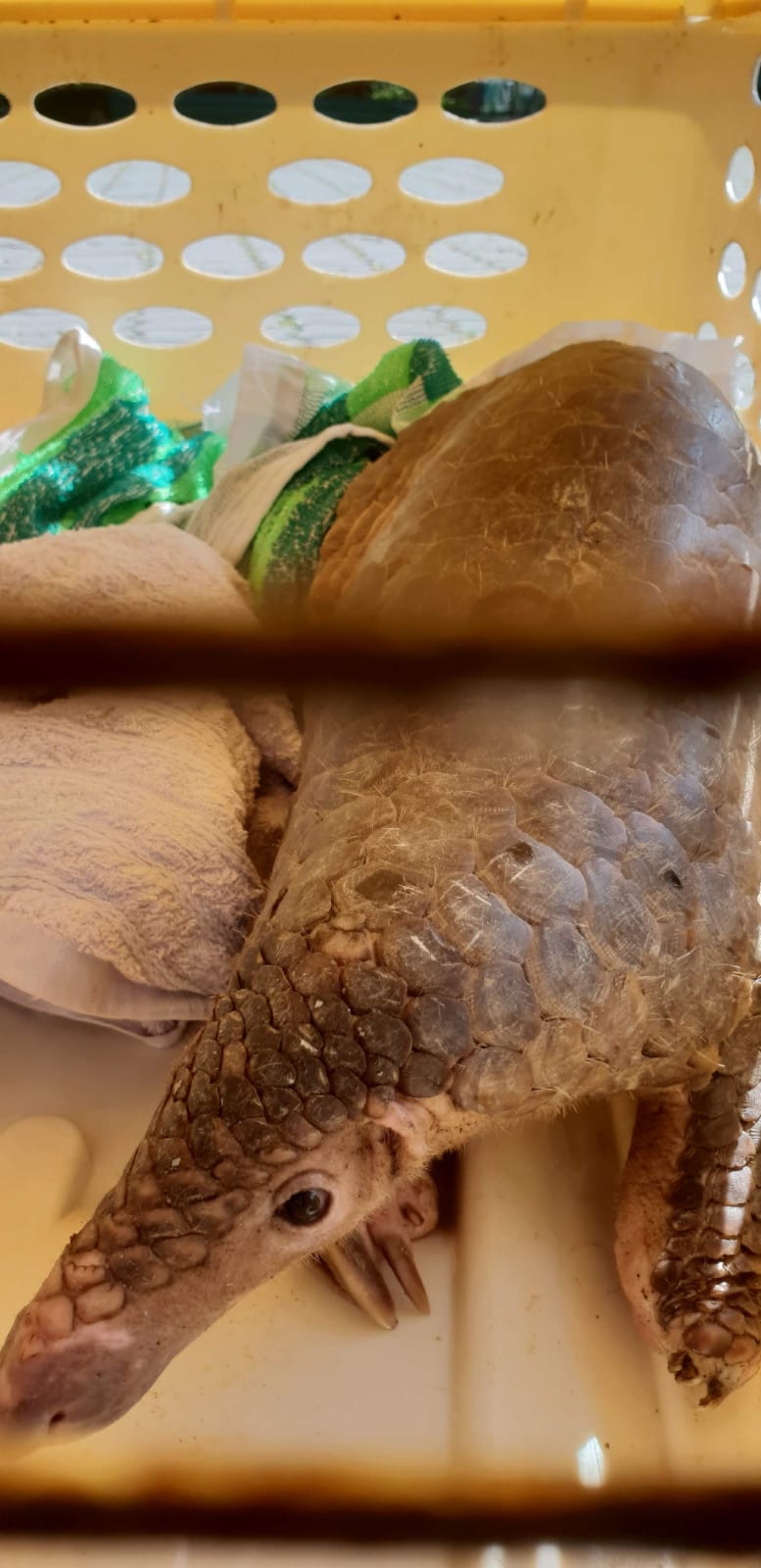 Photo of rescued pangolin in a cage, taken in 2018. The rescued pangolin has stubby/worn down claws on his left fore paw, which suggests he had difficulty navigating the urban environment. Photo courtesy of Pamela Ng.
Photo of rescued pangolin in a cage, taken in 2018. The rescued pangolin has stubby/worn down claws on his left fore paw, which suggests he had difficulty navigating the urban environment. Photo courtesy of Pamela Ng.
Rescued pangolins are microchipped with a unique identification number and released back into the wild. The recapture rate of rescued pangolins is low, and as the mark-and-recapture programme is only “opportunistic” SPWG says that a reliable population estimate “still cannot be made.”
Efforts to protect pangolins in Singapore
To ensure Singapore’s pangolins have a healthy future, NParks has been working to better connect forest patches, so they can move around the island to find food and mates, and not get stuck in one place.
NParks has also been leaving dead logs from fallen trees in nature parks and nature reserves so pangolins have a ready supply of termites to feast on.
Compared with the rest of the region, where poaching is rife in countries such as Indonesia, Vietnam and China, Singapore may even be something of a stronghold for the Sunda pangolin.
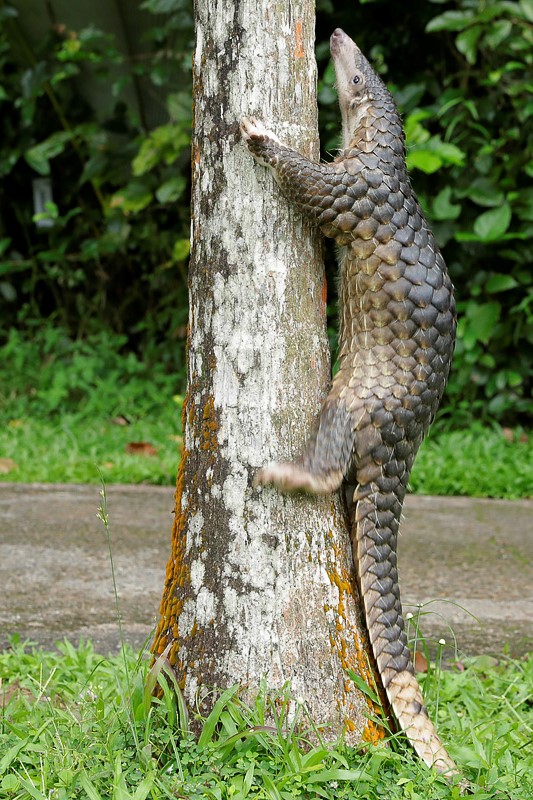 Photo courtesy of Wildlife Reserves Singapore.
Photo courtesy of Wildlife Reserves Singapore.
“It’s hard to say and be correct, but I’m feeling positive [about the future of pangolins] in Singapore,” says Loke.
“We have strict laws against animal poaching, our protected areas are well managed, and there’s growing awareness about the need to conserve pangolins — and for me, there’s a sense of pride that the world’s most trafficked animal is found in our forests,” she says.
“Even though there is ongoing pressure on our forests from urbanisation, and the narrative is that we have to keep developing, I feel generally positive that our protected areas are here to stay, and that’s good news for pangolins,” she says.
How can members of public help to protect pangolins?
If you see a pangolin that is injured or stuck somewhere far from its forest home, call ACRES’ 24-hour rescue hotline on 9783 7782 or the NParks Animal Response Centre on 1800 476 1600.
What you shouldn’t do is pick them up and take them home. Concerned citizens have been known to take pangolins back to their apartments, before calling ACRES for help. “Some people have good intentions, but they can lead to bad results,” says Loke.
“People get pretty excited when they spot pangolins. But the idea is to be cool. Don't make sudden movements that might surprise or stress out the pangolin. Just keep your distance,” she says.
Remember to SLOW DOWN when driving near nature parks and reserves, and don’t go rambling in nature reserves at night, when pangolins are active.
“Besides the disturbance caused to the biodiversity, hiking at night also poses a safety concern for the hiker,” says Sharon Chan, director of conservation of NParks.
Anyone caught entering nature reserves at night could be fined up to S$2,000.
Related stories
Top image courtesy of ACRES and WRS
If you like what you read, follow us on Facebook, Instagram, Twitter and Telegram to get the latest updates.
